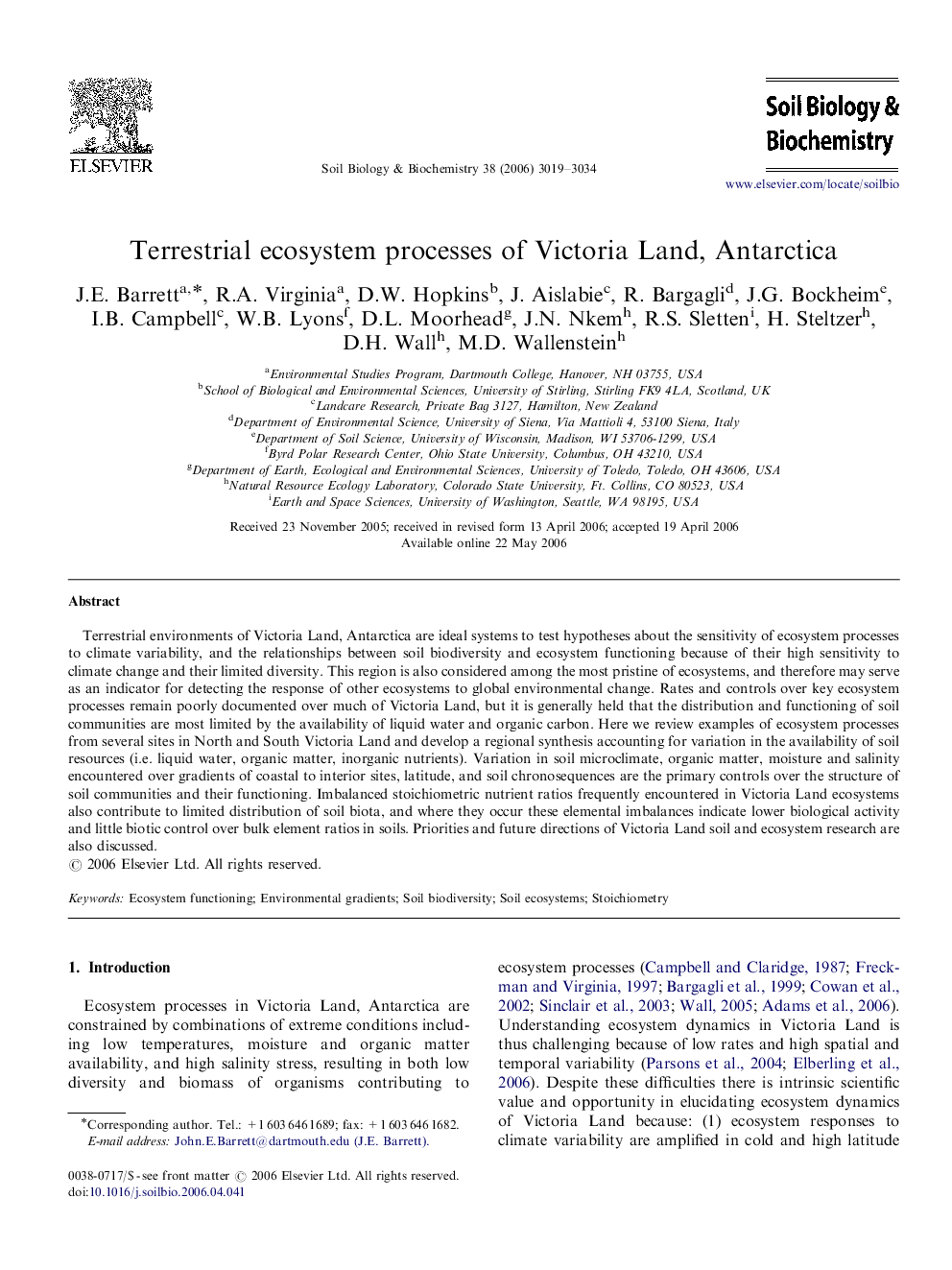| Article ID | Journal | Published Year | Pages | File Type |
|---|---|---|---|---|
| 2026160 | Soil Biology and Biochemistry | 2006 | 16 Pages |
Terrestrial environments of Victoria Land, Antarctica are ideal systems to test hypotheses about the sensitivity of ecosystem processes to climate variability, and the relationships between soil biodiversity and ecosystem functioning because of their high sensitivity to climate change and their limited diversity. This region is also considered among the most pristine of ecosystems, and therefore may serve as an indicator for detecting the response of other ecosystems to global environmental change. Rates and controls over key ecosystem processes remain poorly documented over much of Victoria Land, but it is generally held that the distribution and functioning of soil communities are most limited by the availability of liquid water and organic carbon. Here we review examples of ecosystem processes from several sites in North and South Victoria Land and develop a regional synthesis accounting for variation in the availability of soil resources (i.e. liquid water, organic matter, inorganic nutrients). Variation in soil microclimate, organic matter, moisture and salinity encountered over gradients of coastal to interior sites, latitude, and soil chronosequences are the primary controls over the structure of soil communities and their functioning. Imbalanced stoichiometric nutrient ratios frequently encountered in Victoria Land ecosystems also contribute to limited distribution of soil biota, and where they occur these elemental imbalances indicate lower biological activity and little biotic control over bulk element ratios in soils. Priorities and future directions of Victoria Land soil and ecosystem research are also discussed.
